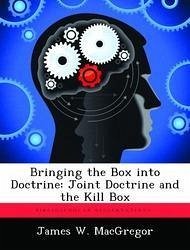Since the dawn of industrial age warfare, commanders have sought ways to maximize the combined effects of maneuver and firepower. A demanding task on battlefields cluttered with horse-drawn artillery and foot infantry, the task became more challenging with the advent of mechanization and flight during the First World War. In the early years of both, the struggle to define the roles of these new weapon systems prevented anything more than ad hoc attempts to synchronize their effects. It would take a tragedy during the Normandy campaign of the Second World War to motivate the Army and its post-war counterpart, the Air Force, to formalize air-ground coordination procedures. Describing these procedures is now the responsibility of joint and service doctrine, but on the topic of commanding, controlling, and synchronizing operational fires, both remain deficient. Most notably, the inability of doctrine to provide clarity and a common philosophy concerning the fire support coordination line has led to confusion and allowed a debate over the purpose and placement of this key fire support coordinating measure to detract from joint interoperability. To compensate for this shortcoming, some components of the joint force have developed the kill box to supplement or potentially replace the fire support coordination line. This paper seeks to evaluate the kill box, determine its utility as a joint fire support coordination measure, and make a recommendation on its role in joint doctrine.
Bitte wählen Sie Ihr Anliegen aus.
Rechnungen
Retourenschein anfordern
Bestellstatus
Storno








